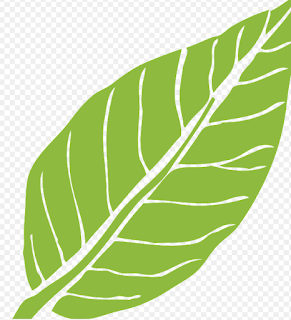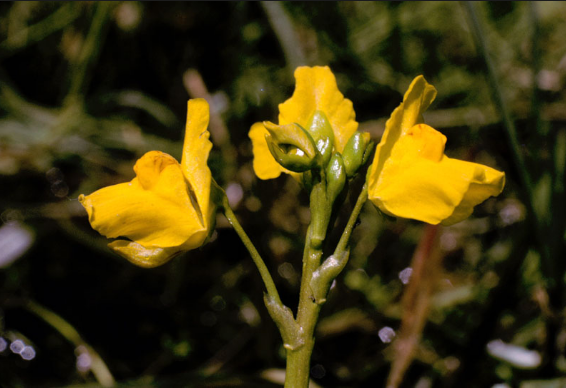Batrachospermum Occurrence:- (1) Batrachospermum is fresh water alga. (2) It is found in clear, cool, and running streams. (3) Deepwater plants are dark violet or reddish in color. But the shallow-water species are olive green. (4) The intensity of light changes the color of pigments. (5) The thallus is attached to the substratum. Vegetative structure (1) The thallus of an adult plant is soft, thick, filamentous. (2) It is freely branched and gelatinous. (3) The central axis is made up of a single row of large cells. Whorls of branches of limited growth are developed on this axis. (4) These branches are filamentous and dichotomously arranged. (5) The main axis is corticated. It consists of a row of elongated cylindrical cells....
Morphology of flowering plants
Defination of Leaf :-
A planate Structure of the next plants typically inexperienced and blade like ,that isattach to stem directly or by stalk.Leaf are the most organ for chemical change
and Transpiration.
 |
| Leaf Veinlets |
Functions of The Leaf :-
Leaves ar of predominate importance as they are primarily responsible for the manufacture of food. Photosynthesis, because the method is termed,is the main perform of the leaf.Owing to the presence of pigment, the green colouring pigment, the leaves will manu¬facture advanced organic food matters (like sugar and starch), out of water and greenhouse emission gas absorbed from the soil and air severally, with the help of daylight.Function of leaf :-
Leaves conjointly stick with it respira¬tion, an energy emotional method, whichinvolves intake of atomic number 8 and outgo of almost equal volume of carbon
dioxide. All living organs, of course, have this perform. The third perform of the leaf is transpiration or giving out of way over water as water vapour.
Plants sometimes absorb water from the soil abundant in way over their need.Besides these traditional functions, leaves defend the axillary buds, often store up water and food matters and perform different special functions as well.
 |
| Leaf |
Parts of leaf :-
Blade (lamina) : The flat or enlarged a part of a leaf. The blade is the entire leaf unit. generally this can be created of many smaller leaflets (in case of compound leaf).
Leaflet : a private blade of a leaf.
Margin :
The fringe of the leaf is thought because the leaf margin. staring at the margin of the leaf will be a crucial in distinctive the leaf. Leaf margins could also be represented as entire, toothed, or lobed.
Vein ( nervure ) : The central or main vein of a leaf
Leaf Apex : The Apex is that the tip of the leaf.
Leaf Base : Base is that the name given to the a part of the blade that's nearest to the stem.
Nodes : purpose of attachment to the stem .
Axilary bud : Lateral bud set at the bottom of a leaf stem.
Petiole : The stem is that the skinny stalk that connects the blade to the stem.
Stipule : plant structures ar little leaf-like structures that will or might not be gift at the bottom of the stem.
Leaf base, by suggests that of that the leaf remains connected to the stem or branch.Leaf stalk or stem, the cylindrical stalk which con¬nects the leaf base with the flat blade.
Leaf blade or plate, the inexperienced flat expanded a part of the leaf. It goes without saying that the blade is that the most impor¬tant part.
The blade has sometimes a outstanding rib running up to the tip. it's the nervure.The midrib has several branches and sub branches distributed within the plate. They are known as veins. Veins extremely type the skeleton of the leaf on that softer materials stay inserted, and that they ar the channels for physical phenomenon of water and food.
The outer reaches of the leaf forms the margin, and also the extreme tip, the apex.
Venation :-
It is the arrangement of veins and conjointly the various veinlets within the leaves.Different plants show differing kinds of venation. Usually, there ar 2 types of venation.
 |
| Parllel and reticulate venation |
Reticulate venation:-In a reticulate venation, the veinlets ar organized in a random fashion to create a posh network of veinlets.
Ex: dicotyledonous plants sort of a rose plant.
Parallel venation:
In this fashion, the veinlets are arranged parallel to every different. Ex: In monocotyledons like paddy.
According to venation :-
Two kinds of venation gift in primarily plants of liliopsid and flowering plant.Reticulate Ventation
Parllel Venation.
The arrangement of veins and also the veinlets within the plate of leaf is termed as venation.
When the veinlets type a network, the venation is termed as reticulate .
When the veins run parallel to every different inside a plate, the venation is termed as parallel .
Leaves of dicotyledonous plants usually possess reticulate venation, whereas parallel venation is that the characteristic of most monocotyledons.
Types of Leaves :-
A leaf is alleged to be straightforward, once its plate is entire or once incised, the incisions don't touch the nervure. When the incisions of the plate reach up to the nervure breaking it into variety of leaflets, the leaf is termed compound.A bud is gift within the angle of stem in each simple and compound leaves, however not within the axil of leaflets of the leaf.
The compound leaves could also be of 2 varieties . In a pinnately leaf variety of leaflets are gift on a typical axis, the rachis, which represents the nervure of the leaf as in neem.
In palmately compound leaves, the leaflets ar connected at a typical purpose, i.e., at the tip of stem, as in plant fiber.
 |
| Pinnately and Palmately |
Types of Leaves :-
Acicular type: they're acerose.Linear Type: they're long and comparatively broader as compared to different leaves.
Lanceolate Type: they're lance-shaped.
Oblong Type: they're rectangular in their form and structure.
Reniform type: They talk over with the leaves with the form of kidneys.
Cordate type: they're cordate and have a deep notch at the bottom.
Orbicular type: they're additional or less circular in their shape.
Saggitate type: they're formed like arrow-heads.
Elliptical Type: they need shapes of ellipses.
Hastate type: the form of those leaves is like saggitate. The two basal lobes ar directed outward.
Ovate Type: they're oval or ovoid in their structure.
Lyrate Type: they're within the form of a harp.
Spatulate Type: they need shapes resembling spatulas or spoons.
Centric Type: they're cylindrical and hollow.
Oblique Type: The plate of this leaf has unequal halves.
Cuneate Type: they're wedge-shaped.
Phyllotaxy :-
Phyllotaxy is that the pattern of arrangement of leaves on the stem or branch. this can be sometimes of 3 types – alternate, opposite and whorled . |
| Whorled Leaf in Alstonia |
In alternate kind of phyllotaxy, a single leaf arises at every node in alternate manner, as in china rose, mustard and sun flower plants.
In opposite kind, a try of leaves arise at every node and lie opposite to every different as in Calotropis and guava plants. If quite 2 leaves arise at a node and type a whorl, it's known as whorled, as in dicot genus.
Leaf Tendrils :-
The whole leaf or additional commonly the elements of the leaves ar changed into slendersensitive tendrils for ascension.
The whole plate in rosid dicot genus or leguminous plant, the terminal leaflets in pea, the apex in climbing lily the stem in vine and also the stipules in Smilax ar changed into tendrils.
Spines :-
The plate or an area of it should be modified into laborious end structure, known as spine, for the purpose of self-defense. In common Opuntia ,the stem becomes inexperienced and flat (phylloclade) and the leaves ar born-again into spines. Similarly the apex of date-palm, the margin of white thistle stipules in Acacia is changed into spines. (It ought to be noted that thorns and spines stick with it constant function; but thorns ar changed stems andspines ar modi¬fied leaves. The curved end outgrowths of roses ar the prickles.)
Storage Leaves :-
Many leaves become fleshy and succulent because of the storage of water and food. Here the leaves ar partially modified. Leaves of xerophyte, Aloe, the scaly leaves of onion are familiar examples.Inscetivorus LEAF :-
Insect-Catching Leaves:The myrmecophagous plants have peculiar leaves nicely tailored for catching insects .
(a) dicot genus or Pitcher Plant:
 |
| Pitcher plant |
The pitcher incorporates a colored hood for attracting the insects.
(b) genus Utricularia or Bladder-Wort:
 | |
every bladder incorporates a valve-like door that opens solely inwards. the tiny aquatic insects push within the valve and ar caught. In course of your time they die and also the bodies ar digestible.
(c) magnoliopsid genus or Sundew:
 |
| Sundew |
By the secretion of enzymes the insect body is rotten. once finishing digestion the tentacles resume their original position and find prepared for one more prey.
5. Leaves of Bryophyllum (B. Pathar kuchi), flower bear epiphyllous buds and so facilitate in vegetative multiplication.
Comments
Post a Comment
Thanks